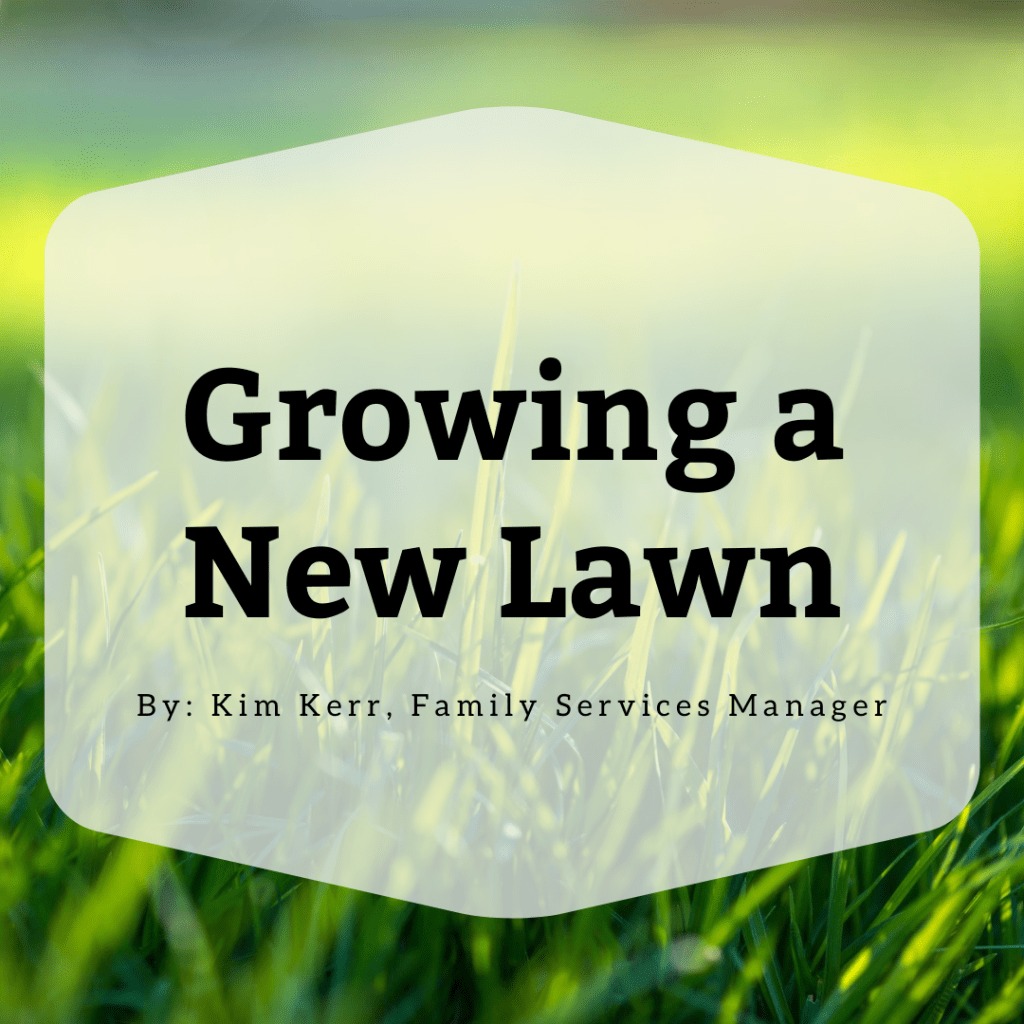
By: Kim Kerr, Family Services Manager
I have never owned a newly built home. When we have moved into our homes the grass has already been growing and is ready to be mowed. Here at Habitat, many of our homes are brand new builds. That means the lawns are brand new also. I thought it might be helpful to look at how to grow a beautiful lawn.
At Habitat, we like to get people into their new homes as soon as they are completed. Sometimes that may mean that the house is ready to be occupied in February. Obviously in Ohio, this is not a good time to put down a lawn. Habitat will return to seed lawns at a later time, when the weather is appropriate. This summer we planted lawns for 6 of our families.
It is common to seed lawns in the spring or fall. Planting in the summer can take advantage of warm summer weather. The warm soil will make the grass germinate faster than in cooler seasons. However, you must keep the soil moist to be sure that all the seeds have enough water for healthy growth. All plants need water. After the seeds have been planted, the soil needs a good soaking. Use a sprinkler attachment on your hose – the water needs to fall gently onto the soil, otherwise it could wash the seed away. Don’t let the soil dry out until the grass is growing strong. With the hot summer sun, the seeds need to be kept constantly moist until seedlings emerge. This will require you to water your new lawns often. Watering will be the responsibility of the homeowner. If the soil is damp and warm you can expect to see grass growing within 10-14 days.
Until grass seedlings are 2 to 3 inches tall, they should remain covered by straw and foot traffic should be avoided. Habitat will put down this layer of straw. Grass seedlings will typically take from three to five weeks to reach this height, although it may be different depending on weather conditions. The straw holds moisture and keeps the grass seeds and seedlings from drying out. Until your lawn is established, grass seed or plants will die if allowed to dry completely. Your lawn may take between two and six months to be fully established.
With hot summer temperatures come pesky weeds. You need to hand-pull any emerging weeds. These plants steal nutrients and moisture away from your struggling seedlings. It takes around 6 months until the grass is strong enough for heavy traffic so please be gentle with your lawn in the first few months. Keep in mind that in the fall you will need to keep leaves and debris off of your lawns as well, since these items can also damage your lawn.
Prior to the first cutting remove the straw with a garden rake, being careful not to damage the lawn. Mow your new lawn when the grass is 7.5-8.5 cm long. It’s important that your mower blades are nice and sharp and that you only cut off the top 1cm of growth. It’s best to collect the clippings for the first few cuts as they could suffocate the young plants if they are left on the surface.
At about 4 to 6 weeks after the seeds germinate fertilize the lawn with a high quality fertilizer that is predominantly nitrogen. Once turf is 4 to 6 weeks old or older, nitrogen is the most important nutrient for a healthy, attractive lawn. After six to eight weeks, you can then start fertilizing as you would with any established lawn.
I used information from Amy Rodriguez, Andrew Hazleton and gardeningjourney.com/fertilize-new-grass/ for this article.
